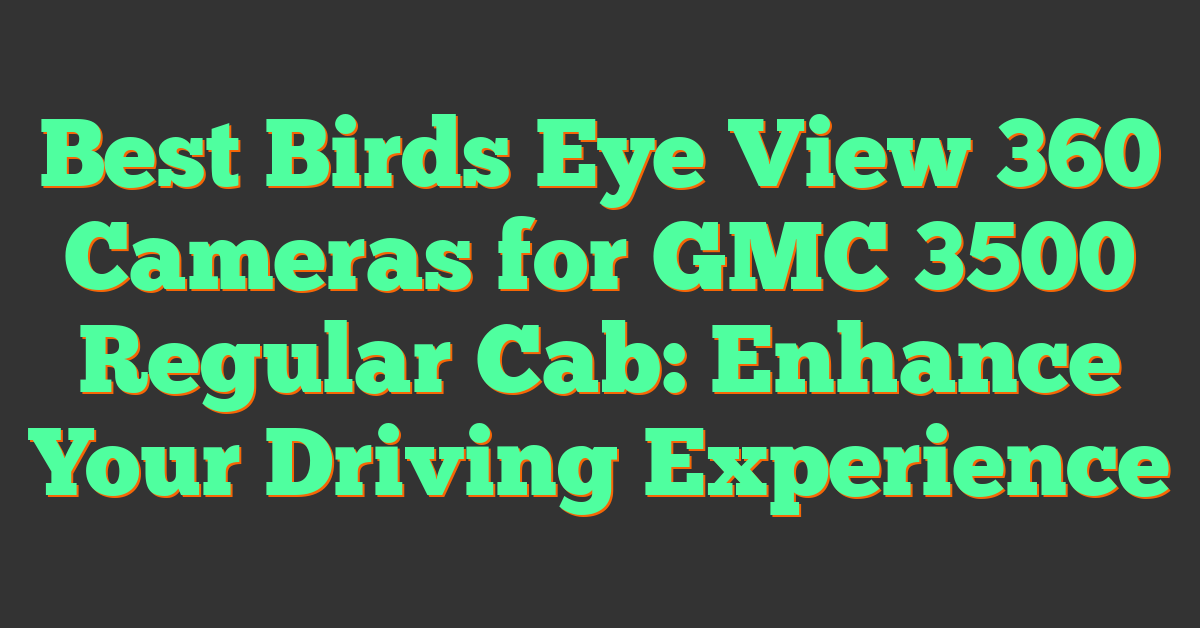Key Takeaways
- Drone 360 cameras offer immersive aerial photography and video, capturing a full 360-degree field of view ideal for creative projects like virtual tours.
- Flight time is crucial for uninterrupted shooting, directly impacting the ability to capture seamless panoramic shots and immersive content without mid-air interruptions.
- Battery efficiency, drone weight, and environmental factors such as wind and temperature significantly affect flight duration and overall performance.
- Balancing camera quality with endurance is key, as higher-resolution 360 cameras can strain battery life; drones with optimized power management mitigate this issue.
- Popular drone models like the DJI Mavic 3 and Autel EVO Lite+ offer robust flight times and compatibility with advanced 360 cameras, while budget options like the DJI Mini 3 Pro cater to beginners.
- Optimizing payload, camera settings, and regular maintenance can extend flight time and improve drone performance for capturing high-quality 360-degree footage.
Drones equipped with 360 cameras have revolutionized aerial photography, offering breathtaking views and immersive content. But while the technology is impressive, flight time remains a critical factor that can make or break your experience. Balancing camera capabilities with battery life isn’t always straightforward.
I’ve noticed many drone enthusiasts overlook how flight time impacts their ability to capture uninterrupted footage. From battery efficiency to environmental factors, several elements come into play. If you’re aiming for seamless shots without mid-air interruptions, understanding these considerations is key. Let’s dive into what you need to know to get the most out of your drone 360 camera.
What Are Drone 360 Cameras?
Drone 360 cameras combine the capabilities of aerial drones with full spherical camera systems, capturing immersive photos and videos from above. These cameras record a complete 360-degree field of view, making them ideal for creating virtual reality content or panoramic shots. Unlike standard drone cameras, 360 cameras feature dual lenses or multiple sensors to capture every angle simultaneously.
I’ve noticed these cameras offer unique advantages for creative projects. They allow dynamic storytelling by giving viewers control over what they see, whether it’s a sweeping cityscape or an outdoor event. For instance, when I worked on virtual tours, drone 360 cameras let me create fully immersive experiences that standard cameras couldn’t achieve.
Many drone 360 cameras also feature image stabilization and advanced stitching technology to merge multiple frames seamlessly. Brands like Insta360 and GoPro design models optimized for crisp output and smooth aerial footage, even in windy conditions.
Importance Of Flight Time In Drone 360 Cameras
Flight time directly affects the ability to capture high-quality 360-degree footage. Longer flight durations allow more opportunities for uninterrupted shots, especially in outdoor shooting scenarios where recharging may not be feasible.
Impact On Capturing Panoramic Shots
Adequate flight time is essential for creating seamless panoramic shots. With drones equipped with 360 cameras, ensuring smooth transitions between movements is critical. Shortened flight times disrupt the process, leading to incomplete or rushed footage. For example, during sunrise or sunset shoots where lighting changes rapidly, a drone with insufficient flight time might fail to complete the scene. Longer flight durations ensure you capture natural transitions in their entirety, leaving no gaps.
Environmental factors, like strong winds, also reduce the effective flight time of your drone. When navigating these conditions, optimizing flight routes and camera settings beforehand ensures every second is used effectively. Modern cameras with stitching software, such as those from Insta360, complement longer flight durations by delivering high-quality spherical visuals within limited operational windows.
Balancing Flight Time With Camera Quality
Choosing a drone with a balance between camera quality and endurance maximizes shooting potential. Higher-resolution 360 cameras often consume more energy due to advanced sensors, image stabilization, and onboard processing systems. For instance, a dual-lens 8K resolution camera adds significant weight and processing demands, which can shorten flight time. I prioritize drones with efficient power management systems to counter this.
« Professional 360 Cameras: Resolution Breakdown You Need to Know Before Buying
Smartphone 360 Cameras: Compatibility List to Elevate Your Creative Content »
Battery types, capacity, and recharge times are crucial considerations when balancing camera performance with flight time. Lithium polymer batteries, for example, provide lightweight solutions but vary widely in capacity. Pairing mid-range 360 cameras with drones offering 25 to 40 minutes of flight time, like the DJI Mavic 3, often strikes the best balance. Carrying spare batteries also extends operational time, especially for long shooting sessions in remote areas.
Factors That Affect Flight Time
Flight time plays a crucial role in capturing high-quality 360-degree footage, impacting the ability to shoot uninterrupted scenes. Key elements like battery efficiency, drone design, and environmental variables determine how long a drone 360 camera stays in the air.
Battery Capacity And Efficiency
Battery capacity directly influences flight time. A higher-capacity battery, measured in milliampere-hours (mAh), generally provides longer operational durations. However, efficiency matters just as much as capacity. Some drones, like the Autel EVO Lite+, feature optimized power management systems, extracting maximum performance from each charge. I’ve noticed that choosing drones with intelligent battery features, such as adaptive energy use based on flight patterns, can noticeably extend flight sessions, especially for demanding shots requiring extended hover times.
Weight And Design Of The Drone
Drone weight significantly affects power consumption. Heavier drones, especially when equipped with high-resolution 360 cameras like the Insta360 Sphere, drain batteries faster. Lightweight models designed with aerodynamic efficiency, such as the DJI Mini 3 Pro, reduce air resistance, allowing for longer flights. I always check the overall payload, factoring in any accessories or extra gear, to avoid compromising flight longevity. Compact drones with streamlined designs are my go-to for shooting in remote locations where recharging isn’t possible.
Environmental Conditions
Environmental factors can quickly impact effective flight time. Strong winds demand more power to maintain stability, reducing flight duration. High altitudes, with thinner air, strain the drone’s motors, further cutting into battery life. I’ve found that planning shoots during mild weather conditions significantly boosts operational time. Additionally, maintaining the drone in the optimal temperature range improves energy efficiency, as extreme heat or cold can degrade battery performance. For me, checking local forecasts is as essential as packing spare batteries.
Top Drone 360 Cameras With Notable Flight Times
Flight time plays a crucial role in capturing seamless 360-degree content, especially for photographers and videographers like me who rely on uninterrupted aerial footage. Here are some standout drone models that combine excellent 360 camera compatibility with impressive flight durations.
High-End Models
DJI Mavic 3
The DJI Mavic 3 supports high-resolution 360 cameras like the Insta360 Sphere and achieves up to 46 minutes of flight time under optimal conditions. Its intelligent power management system ensures efficient battery usage, making it highly reliable for extended shoots. Paired with advanced stabilization, these combinations produce smooth, immersive content even in windy environments.
Autel EVO Lite+
Known for its versatility and 40-minute flight duration, the Autel EVO Lite+ works seamlessly with 360 cameras, offering stable aerial photography. Its robust design minimizes the impact of environmental conditions, allowing consistent results during outdoor shoots. For large video projects, this model ensures sufficient airtime without frequent battery changes.
Budget-Friendly Options
DJI Mini 3 Pro
Compact and lightweight, the DJI Mini 3 Pro delivers up to 34 minutes of flight time. Compatible with smaller 360 camera setups, it’s an excellent choice for hobbyists or those exploring immersive photography on a budget. Its portability and strong wind resistance enable high-quality footage in diverse shooting environments.
Hubsan Zino Mini Pro
With a flight time of around 40 minutes, the Hubsan Zino Mini Pro is one of the most affordable drones capable of supporting lightweight 360 cameras. Despite its lower price, it offers reliable performance during extended shoots, making it suitable for beginners looking to experiment with aerial 360 captures.
For both high-end and budget-friendly options, I recommend investing in spare batteries to maximize shoot durations, especially for extended projects or remote locations. Always plan flights carefully to get the most out of each drone’s flight capabilities.
Practical Tips To Extend Flight Time
As someone passionate about capturing immersive 360 content, I’ve found that extending flight time is crucial for achieving uninterrupted footage. These strategies can help optimize your drone’s performance during shoots.
Optimizing Camera Settings
Adjusting camera settings can significantly conserve power and extend flight time. Lower the resolution to 4K if 8K isn’t essential for your project. Reduce the frame rate to 24 fps for cinematic shots, as high frame rates increase processing demands and drain the battery. Switch off features like HDR, auto-stitching, or live streaming unless required for the shoot. Use manual camera settings to avoid unnecessary energy use from constant auto-adjustments.
Reducing Payload Weight
Reducing the drone’s payload improves maneuverability and maximizes flight duration. Choose lighter 360 cameras like the Insta360 GO 2 for better efficiency. Remove unnecessary accessories such as propeller guards during calm weather. Opt for lightweight landing gear and use minimal equipment when planning shoots in battery-intensive conditions. Combining a lighter payload with a high-capacity battery can enhance flight times dramatically.
Proper Maintenance Practices
Regular maintenance extends your drone’s performance and reliability. Clean the propellers and remove debris that can strain the motors. Calibrate the drone’s compass and gimbal to prevent power inefficiencies caused by onboard errors. Charge the batteries fully but avoid overcharging, as it can degrade capacity over time. Store batteries in cool, dry environments to maintain their health. Before every shoot, inspect for wear on critical components like motors and connectors. These practices help ensure steady performance and longer flight durations.
Conclusion
Understanding the relationship between flight time and 360 camera performance is essential for capturing truly immersive aerial footage. By carefully balancing camera features, drone capabilities, and environmental factors, you can significantly enhance your shooting experience.
Investing in drones with efficient power management and planning your flights strategically will help you make the most of your equipment. Don’t forget to carry spare batteries and maintain your drone regularly to ensure consistent performance.
With the right approach, you’ll be able to unlock the full potential of drone 360 cameras, creating stunning visuals that elevate your projects to new heights.












